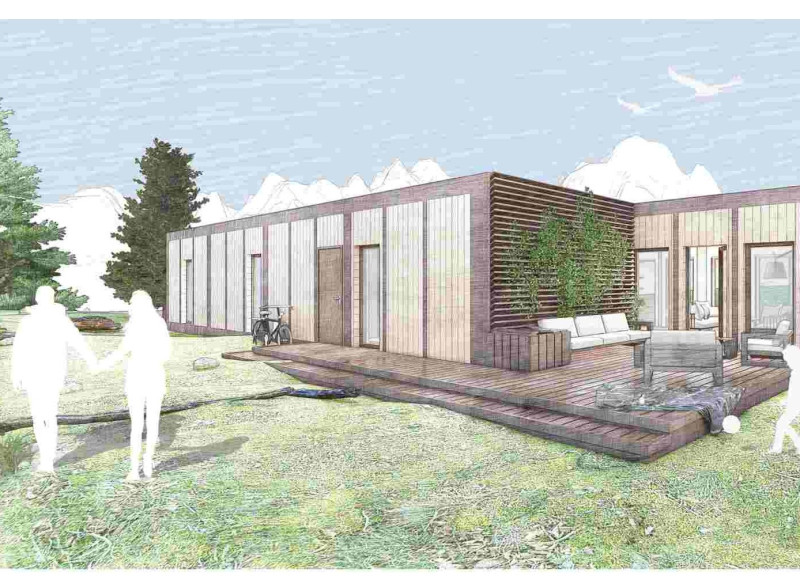5 key facts about this project
The project presents a modular living solution designed to address contemporary housing challenges through a focus on sustainability and adaptability. This architectural initiative is characterized by its modular units, which are designed to maximize utility while minimizing environmental impact. Each unit functions as a self-sufficient living space that can be tailored to the user's specific needs, making it an ideal solution for diverse occupants.
The modular units measure 3.6 m x 3.6 m internally and can be arranged in various configurations. This adaptability allows for different living situations, such as accommodating singles, couples, or families. The design emphasizes communal spaces while maintaining private areas, ensuring a balance between social interaction and personal retreat. The project represents a significant step toward providing efficient and flexible housing for various demographic groups.
Material Selection and Sustainable Features
The architectural design incorporates environmentally responsible materials, which play a critical role in the overall sustainability of the project. Key materials include cement board for durability, wood for its aesthetic and thermal properties, and glass to maximize natural illumination. The integration of solar windows enhances energy efficiency, while photovoltaic panels provide sustainable energy generation. Rainwater harvesting systems further support resource conservation by utilizing collected water for household purposes.
Unique design approaches include elevated modular units capable of adapting to challenging landscapes, thereby eliminating extensive foundation requirements. This feature not only reduces costs but also lessens the environmental footprint. Internally, the use of adjustable walls promotes flexibility, allowing occupants to modify their living spaces based on functional needs or preferences. Additionally, the incorporation of a dual purification system ensures efficient water usage, while an air-source heat pump lowers energy consumption.
Architectural Integration with Landscape
The project integrates architectural elements with the surrounding landscape, enhancing both aesthetic appeal and ecological functionality. The deliberate incorporation of landscaping, including potential green roofs or vertical gardens, contributes to biodiversity and promotes a healthy living environment. The design maximizes natural light and airflow, creating inviting and comfortable interiors that support well-being.
The overall approach combines modern architectural principles with practical design strategies to address housing needs sustainably. The emphasis on modularity, renewable energy sources, and resource conservation sets this project apart within the current housing landscape. It encourages engagement with the environment while supporting a flexible lifestyle suited to users' evolving needs.
For more information on the architectural plans, architectural sections, and architectural designs of this project, readers are encouraged to explore the presentation in detail to gain a comprehensive understanding of its unique architectural ideas.






















































